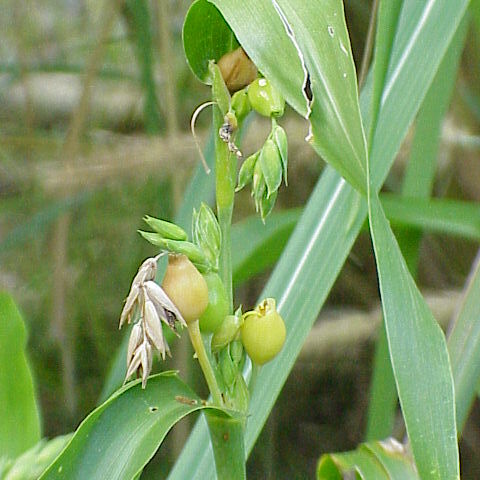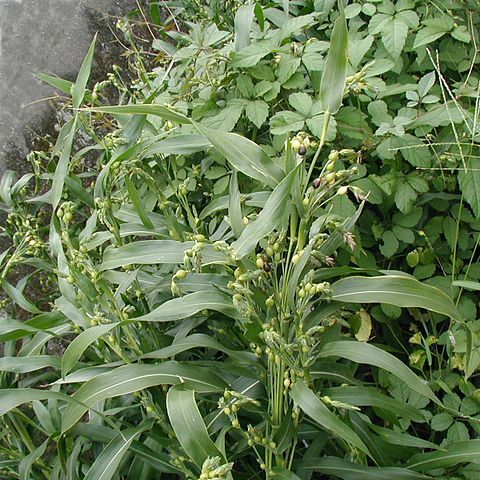Robust annuals or perennials with erect or floating culms and broad flat leaf-blades; ligule short, membranous. Inflorescences terminal and axillary, often numerous, each subtended by a globose or elongated ivory-like cupule (a modified leaf-sheath within which is a membranous prophyll) and comprising 2 racemes; female raceme enclosed by the cupule, and consisting of 1 sessile spikelet accompanied by 2 barren pedicels; male raceme exserted from the mouth of the cupule, the spikelets imbricate and borne in pairs or threes, one pedicelled, the other(s) sessile. Female spikelet; glumes orbicular, membranous with a cartilaginous beak, the upper keeled; lower floret represented by an orbicular membranous lemma; upper floret with membranous lemma and palea, the 2 stigmas exserted from the cupule. Male spikelet lanceolate to elliptic-oblong; lower glume flat on the back, 2-keeled, the keels winged above; upper glume boat-shaped; florets 2, with membranous lemma and palea, the lower as long as the spikelet, the upper shorter and sometimes barren. Caryopsis subglobose to ellipsoid.
Monoecious, the staminate and pistillate spikelets in the same inflorescence; staminate spikelets 2-flowered in 2's or 3's at each joint of a slender continuous rachis, 2 sessile, the other pedicellate, sometimes wanting; first glume many-nerved, 2-keeled, the keels broadly winged above the middle, the margins narrow and not much inflexed; pistillate spikelets 3 together enclosed in a very hard white or grayish, bead-like involucre or modified bract, the peduncle of the staminate raceme protruding from the orifice at the apex.


